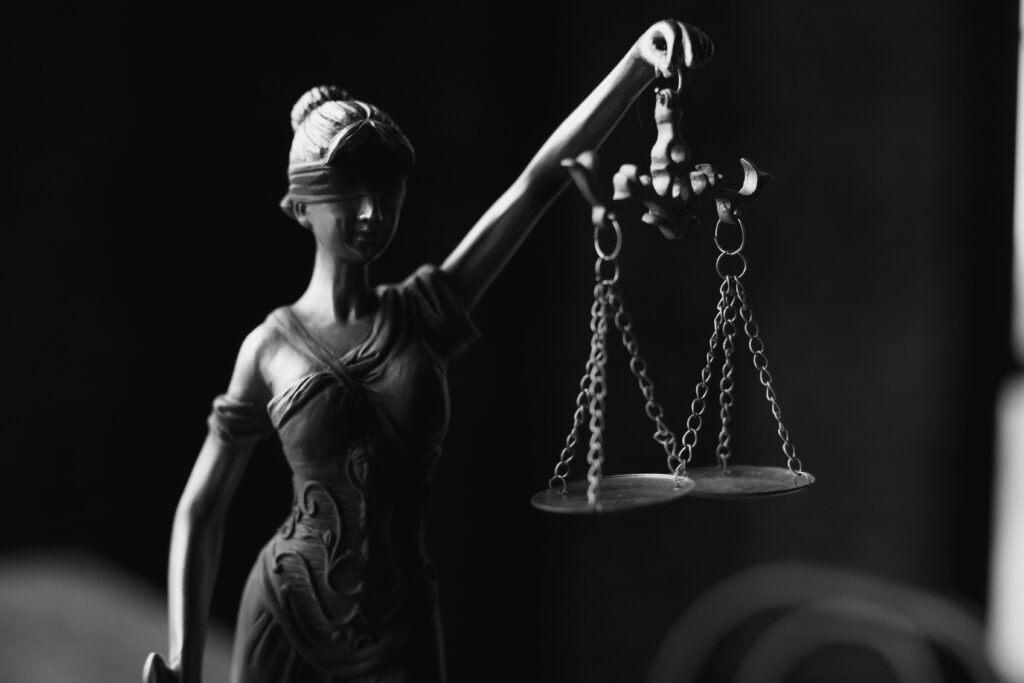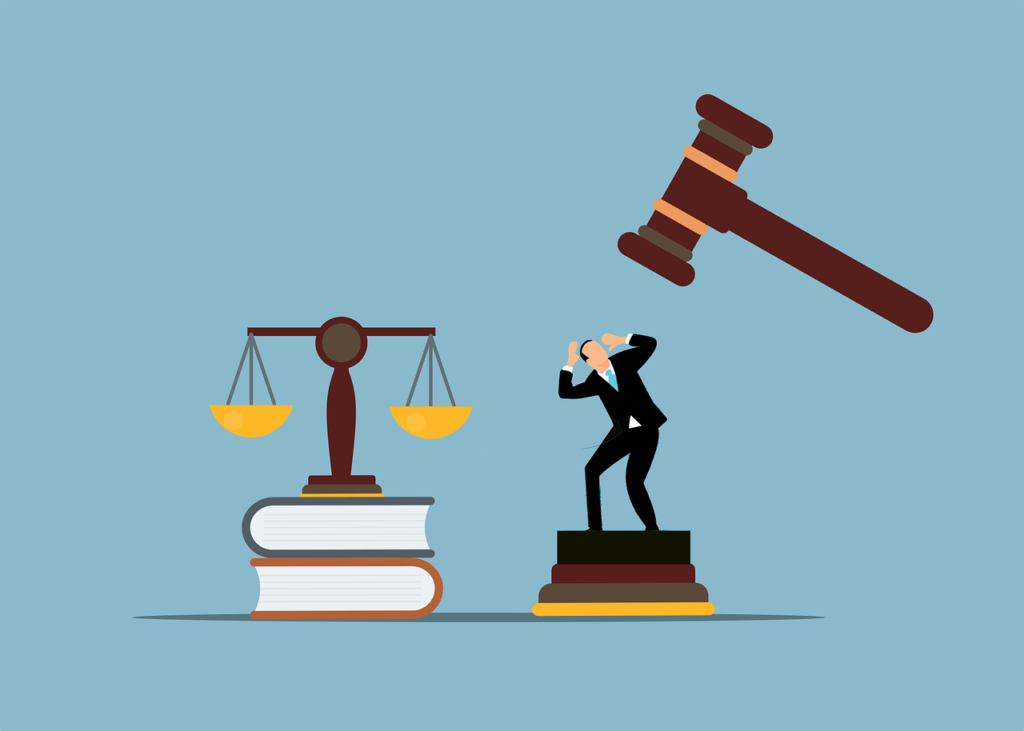Published On: 30th October, 2024
Authored By: Saleha Haneef
Integral University, Lucknow
CITATION: AIR 2018 SUPREME COURT 4321
DATE OF JUDGEMENT: 6 September 2018
NAME OF COURT: Supreme Court of India
PETITIONER: Navtej Singh Johar & Ors.
RESPONDENT: Union of India
BENCH: Chief Justice Dipak Mishra, Rohinton Fali Nariman, A.M. Khanwilkar, D.Y. Chandrachud, Indu Malhotra
INTRODUCTION
The crucial decision in Navtej Singh Johar v. Union of India (2018) plays a key role in the conversation about LGBTQ+ rights in India. It tackled the legality of Section 377[1] of the Indian Penal Code (IPC), which made consensual same-sex relationships illegal. The Supreme Court’s verdict not only made homosexuality legal but also represented a major move towards acknowledging the rights and respect of the LGBTQ+ community in India.
FACTS OF THE CASE
In 2009, the Naz Foundation contested section 377 of the Indian Penal Code, 1860, because it violated Article 14[2], Article 15[3], Article 19(1[4]), and Article 21[5] of the Constitution. In the case of Naz Foundation v. Government of N.C.T. of Delhi[6], the Delhi High Court ruled that section 377 of the Indian Penal Code, 1860—which dealt with consensual sexual conduct between two adults of the same sex—was unconstitutional. The court reasoned that the right to equality guaranteed by Article 14 of the Indian Constitution would be violated by classifying and targeting homosexuals. The Delhi High Court’s ruling was then overturned in 2014 when a two-judge panel of the Hon’ble Supreme Court ruled that section 377 of the Indian Penal Code, 1860 was constitutional in the case of Suresh Kumar Koushal v. Naz Foundation[7]. As a result, the Hon’ble Supreme Court received a petition challenging the two-judge bench’s 2014 decision. Although a three-judge bench was established, they believed that a larger bench was necessary to address the issues brought up. Thus, a five-judge bench heard this case.[8]
In the current case, the petitioner, Navtej Sigh Johar, is a dancer who was accepted into the LGBT community. He filed a writ petition with the Hon’ble Supreme Court asking them to acknowledge the rights to sexual autonomy, choice of sexual partner, and right to sexuality as components of the right to life as mentioned under Article 21 of the Constitution of India. They contested the constitutionality of Section 377, claiming that it infringed upon their basic rights as guaranteed by Articles 14, 15, 19(1), and 21 and was therefore unlawful. Prominent attorneys, such as Anand Grover and Arvind Datar, who fought for the decriminalization of homosexuality and the acknowledgment of fundamental rights, defended the petitioners.[9]
ISSUES OF THE CASE
- Whether Section 377 of the Indian Penal Code, 1860 violative of fundamental rights given under Articles 14 and 15 of the Constitution?
- Whether Section 377 of IPC, 1860 violates the fundamental right to expression given under Article 19 (1) by criminalizing the gender expression of persons belonging to the LGBTQI+ community.
- Whether the criminalization of consensual same-sex relations infringe right to privacy given under Article 21 of the Constitution?
CONTENTIONS
ARGUMENTS BY THE PETITIONER
The petitioners contend that rather than being viewed as diseases, homosexuality, bisexuality, and other sexual orientations are natural. They contend that the criminalization of these orientations violates people’s right to privacy guaranteed by Article 21 of the Constitution, diminishes their sense of personal dignity, and creates discomfort regarding gender identity. They cite the court’s ruling in the K.S. Puttaswamy & Anr v. Union of India & Ors case, in which it was held that “sexual orientation is an essential attribute of one’s privacy”.[10] It also impedes the development of relationships, personal progress, and the freedom of association guaranteed by Article 19(1)(a). The LGBTQ+ community, which makes up roughly 7–8% of India’s population, is subjected to severe harassment and discrimination because of their sexual orientation, making further protection necessary to allow them to live freely and fearlessly. Despite being awarded some rights and being acknowledged as a third gender in the NALSA[11] case, transgender people’s consensual behaviors remain illegal. The petitioners argue that only bestiality and non-consensual activities should be included in Section 377, which would decriminalize consenting same-sex relationships. They contend that fundamental rights including freedom of expression, liberty, equality, and privacy are violated by Section 377. The section violates Article 14 by failing to offer a fair classification and by lacking clear definitions for “natural” and “unnatural” sex. The law, they stressed, infringed upon the right to privacy by making private, voluntary acts between adults illegal, which in turn undermined their self-worth and sense of self. The petitioners referenced international human rights treaties to support their claim that decriminalizing homosexuality is consistent with universal human rights principles. Additionally, the petitioners contend that Section 377 violates Article 15 because it discriminates against individuals based on their sexual orientation, a category that they believe is included by the prohibition on sex-based discrimination.[12]
ARGUMENTS BY THE RESPONDENT
The respondent contends that to preserve a norm of constitutional appropriateness, Section 377 is necessary to protect constitutional morality by making activities that are judged disparaging and undignified illegal. They argue that the rights afforded to the LGBTQ+ community by the NALSA[13] case are sufficient and that the petitioners’ request for more relief would violate people’s right to privacy, autonomy, and public decency. In addition, the respondent raises concern over public health, arguing that criminalizing specific behaviors is warranted due to the higher HIV risk among gays than heterosexuals and supporting privacy limitations as a means of preserving public health. They contend further that deeming Section 377 unlawful would upend basic social structures like marriage and the family, perhaps undermining the political, economic, and cultural fabric of the country. Section 377 does not breach Article 14 rights in terms of constitutional compliance because it allows for a fair governmental categorization to protect the public interest. Furthermore, it does not violate Article 15, which does not expressly mention sexual orientation but forbids discrimination based on sex. The respondent concludes by cautioning that the Parsi Marriage and Divorce Act, the Special Marriage Act, the Indian Divorce Act, and the Hindu Marriage Act may all suffer if Section 377 is declared unlawful.[14]
JUDGEMENT
The Supreme Court struck down the 158-year-old law on homosexuality that made carnal intercourse against the order of nature a criminal offence. The court overruled its previous judgment given in the Suresh Kumar Koushal case and declared Sec 377 unconstitutional as it violated Art 14,15,19 and 21 of the Constitution. The judgment emphasized that sexual orientation is a part of the right to privacy and personal autonomy.
RATIO DECIDENDI
The argument is based on the assertion that a person’s sexual orientation is an essential component of their freedom and that making consenting to same-sex relationships illegal is against the Constitution’s fundamental rights. The court emphasized that individual rights cannot be sacrificed on the altar of majoritarian viewpoints, highlighting the superiority of constitutional morality over social morality. It stated that a basic component of equality and human dignity includes sexual orientation.
OBITER DICTA
The court emphasized in its observations the necessity of a more inclusive society and the significance of acknowledging the rights of under-represented groups. The court also pointed out that Section 377’s colonial origins and historical background are incompatible with contemporary democracies. The ruling also stressed the necessity of LGBTQ+ rights being recognized by law and that the law must change to reflect shifting social values.
ANALYSIS
As it challenged long-standing social stigmas, the decision was welcomed as a constructive step towards human rights and dignity. The decriminalization of homosexuality and the advancement of equality were in line with worldwide trends. Regardless of their sexual orientation, it was confirmed that everyone has the right to live with dignity. Questioning ingrained biases and social conventions, cleared the path for increased inclusivity and acceptance. Establishing a solid legal precedent, the Supreme Court decided to decriminalize consenting same-sex relationships under Section 377. As a result, the idea that laws should defend rather than criminalize unique identities and relationships is strengthened and a legal framework for future LGBTQ+ rights cases is established. The decision upholds the interpretation of fundamental rights as stated in Articles 21 (Right to Life and Personal Liberty), 15 (Prohibition of Discrimination), and 14 (Right to Equality). This interpretation must guide future legislation, which should support equality and prohibit discrimination based on sexual orientation. The ruling highlights the necessity of extensive legislative modifications to safeguard the rights of people who identify as LGBTQ+. It creates opportunities for laws about adoption rights, same-sex marriage, and anti-discrimination policies in the workplace, medical field, and educational system to be drafted.
There is hope that cultural perceptions of LGBTQ+ people will gradually change as a result of the legal decriminalization of homosexuality. More acceptance and support for more legislative actions aimed at defending LGBTQ+ rights may result from this. The verdict encourages activism and advocacy among members of the LGBTQ+ community and their allies. By enabling people and groups to advocate for broader rights and safeguards, it strengthens civil society. A court review of further laws that might discriminate against LGBTQ+ people is now possible thanks to the verdict. This might result in legal challenges to legislation that upholds discriminatory practices or violates rights related to gender identity or sexual orientation.
CONCLUSION
An important win for human rights in India is the Navtej Singh Johar v. Union of India case. Along with decriminalizing homosexuality, it upheld the values of equality, human dignity, and individual freedom. The Court concluded that a person’s sexual orientation is a genetic trait that they cannot alter. It was stated that having close relationships with people of the same gender is a choice made by LGBTQ+ people on their own, demonstrating their autonomy and freedom of choice. LGBTQ+ individuals are a minority when it comes to sexual preferences, but the court ruled that they are entitled to the same constitutional protections as everyone else. The decision was a significant step towards creating a more accepting society in which people can live their true selves without worrying about repercussions.
Reference(s):
[1] Indian Penal Code, s 377.
[2] Constitution of India 1950, art 14.
[3] Constitution of India 1950, art 15.
[4] Constitution of India 1950, art 19(1).
[5] Constitution of India 1950, art 21.
[6] Naz Foundation v Government of N.C.T of Delhi (2009) 160 Delhi Law Times 277.
[7] Suresh Kumar Koushal v Naz Foundation (2013) SLP (C) No. 15436 of 2009.
[8] Naveen, ‘Case Analysis of Navtej Singh Johar vs Union of India’ (Reflections, 08 April 2023) <https://reflections.live/articles/10552/case-analysis-of-navtej-singh-johar-vs-union-of-india-an-article-by-naveen-9326-lg7ril10.html> accessed 12 August 2024.
[9] IBID.
[10] K.S. Puttaswamy & Anr v Union of India & Ors (2017) 10 SCC 1.
[11] National Legal Services Authority v Union of India AIR (2014) SC 1863.
[12] Shruti Verma, ‘Case Summary: Navtej Singh Johar v/s Union Of India’ (Legal Service India) <https://www.legalserviceindia.com/legal/article-6402-case-summary-navtej-singh-johar-v-s-union-of-india.html> accessed 12 August 2024.
[13] IBID.
[14] IBID.




